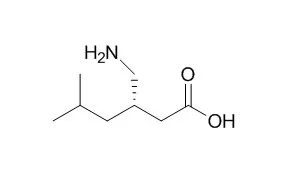| In vivo: |
| Br J Anaesth. 2015 Jan;114(1):10-31. | | Impact of pregabalin on acute and persistent postoperative pain: a systematic review and meta-analysis.[Pubmed: 25209095] | We performed this systematic review to assess the analgesic efficacy of perioperative Pregabalin. Subgroup analyses and meta-regression were performed to assess the impact of individual dose and frequency of Pregabalin administration on analgesic efficacy.
METHODS AND RESULTS:
We included 55 studies. When all doses and administration regimens were combined, Pregabalin was associated with a significant reduction in pain scores at rest and during movement and opioid consumption at 24 h compared with placebo {mean difference [95% confidence interval (CI)]=-0.38 (-0.57, -0.20), -0.47 (-0.76, -0.18), and -8.27 mg morphine equivalents (-10.08, -6.47), respectively}. Patients receiving Pregabalin had less postoperative nausea and vomiting and pruritus compared with placebo [relative risk (RR) (95% CI)=0.62 (0.48, 0.80) and 0.49 (0.34, 0.70), respectively]. Sedation, dizziness, and visual disturbance were more common with Pregabalin compared with placebo [RR (95% CI)=1.46 (1.08, 1.98), 1.33 (1.07, 1.64), and 3.52 (2.05, 6.04), respectively]. All doses of Pregabalin tested (≤75, 100-150, and 300 mg) resulted in opioid sparing at 24 h after surgery. There were no significant differences in acute pain outcomes with Pregabalin 100-300 mg between single preoperative dosing regimens and those including additional doses repeated after surgery. Data were insufficient to reach conclusions regarding persistent pain, but limited data available from two studies suggested that Pregabalin might be effective for the reduction of neuropathic pain.
CONCLUSIONS:
In conclusion, this review suggests that Pregabalin improves postoperative analgesia compared with placebo at the expense of increased sedation and visual disturbances. | | Gen Thorac Cardiovasc Surg. 2015 Feb;63(2):99-104. | | Evaluation of postoperative pregabalin for attenuation of postoperative shoulder pain after thoracotomy in patients with lung cancer, a preliminary result.[Pubmed: 25167976] | Thirty-one to 97% of patients who undergo thoracotomy for lung cancer experience ipsilateral shoulder pain, marring the otherwise excellent relief provided by thoracic epidural analgesia. The aim of this study was to test whether the addition of Pregabalin to the treatment for shoulder pain would provide a significant benefit.
METHODS AND RESULTS:
Twenty patients undergoing thoracic surgery for lung cancer were enrolled in the control group between May 2012 and December 2012, and 20 patients were enrolled in the Pregabalin group between January 2013 and July 2013, consecutively. All patients had standard pre- and intraoperative care. Patients received Pregabalin 150 mg po POD 1 and then non-steroidal anti-inflammatory drugs (NSAIDs) po 2 h later (Pregabalin group), or they received only NSAIDs po at exactly the same times (control group). Pain severity was then measured using a 100-mm visual analog scale (VAS) scoring system.
The VAS scores indicated that patients in the Pregabalin group had significantly less shoulder pain on postoperative day (POD) 2 than those in the control group (control: 27.9 ± 28.1 vs. Pregabalin: 11.8 ± 14.4; p = 0.030). No differences in pain were observed between the two groups on other POD. There were significant differences on only POD 2 in the patients with shoulder pain immediately after surgery. Three of the Pregabalin-treated patients showed mild somnolence.
CONCLUSIONS:
Postoperative administration of Pregabalin provided significant relief of postoperative shoulder pain during earlier POD after thoracic surgery for lung cancer when received multimodal analgesia in combination with NSAIDs. | | Curr Med Res Opin. 2015 May 11:1-9. | | Pregabalin for chronic pain: does one medication fit all?[Pubmed: 25868712] | Pregabalin is frequently prescribed for chronic non-cancer pain. No previous study has examined its off-label use.
Our primary aim was to assess the proportion of patients taking Pregabalin for conditions approved by Health Canada ('on-label') and compare their perspectives on its use to those who use Pregabalin for other conditions ('off-label').
METHODS AND RESULTS:
Patients who have used Pregabalin within the past year were recruited from two registries of chronic non-cancer pain patients treated in tertiary care clinics: the Quebec Pain Registry and the Fibromyalgia Patients Registry. Data on the use of Pregabalin and its perceived benefits were collected from the registries and from completed questionnaires.
Out of 4339 screened chronic non-cancer pain patients, 355 (8.18%) met the study selection criteria. Three-quarters of them (268/355) used Pregabalin for pain conditions not approved by Health Canada and were therefore regarded as off-label users. The most prevalent condition for Pregabalin use was lumbar back pain (103/357; 28.85%). There were no significant differences between on- and off-label users in their perceived satisfaction from Pregabalin therapy and its effect on function and quality of life. Among former users, the most prevalent reason for discontinuation was adverse effects, mainly dry mouth and weight gain.
CONCLUSIONS:
We conclude that despite specific indications for Pregabalin prescription, it is mainly used off-label, notably for low back pain. Nevertheless, off-label users were equally satisfied with its clinical effects. Although formal exploration of the broader analgesic properties of Pregabalin is warranted, treating heterogeneous chronic pain conditions with Pregabalin may be legitimate.
LIMITATIONS:
The main limitations of the study are patients' low response rate, the recruitment of participants solely from a tertiary pain center and not from the general patient population and a possible recall bias that may have arisen from the retrospective nature of the study. |
|






 Cell. 2018 Jan 11;172(1-2):249-261.e12. doi: 10.1016/j.cell.2017.12.019.IF=36.216(2019)
Cell. 2018 Jan 11;172(1-2):249-261.e12. doi: 10.1016/j.cell.2017.12.019.IF=36.216(2019) Cell Metab. 2020 Mar 3;31(3):534-548.e5. doi: 10.1016/j.cmet.2020.01.002.IF=22.415(2019)
Cell Metab. 2020 Mar 3;31(3):534-548.e5. doi: 10.1016/j.cmet.2020.01.002.IF=22.415(2019) Mol Cell. 2017 Nov 16;68(4):673-685.e6. doi: 10.1016/j.molcel.2017.10.022.IF=14.548(2019)
Mol Cell. 2017 Nov 16;68(4):673-685.e6. doi: 10.1016/j.molcel.2017.10.022.IF=14.548(2019)